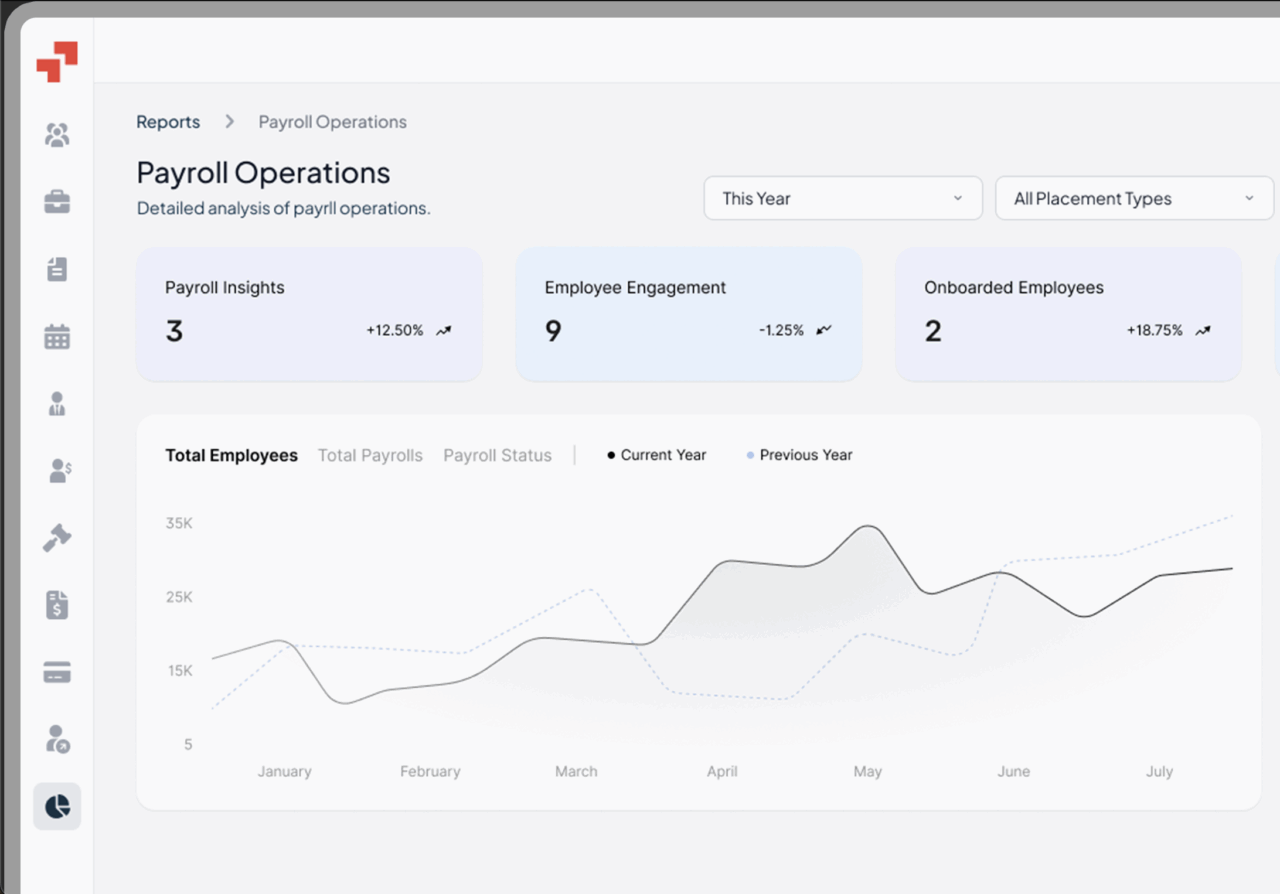Global Workforce GlossaryBi-weekly Pay
Biweekly pay is a payroll schedule where employees are paid every two weeks, usually on the same weekday such as Friday.
This results in 26 pay periods in most years and sometimes 27, depending on the calendar.
In the US, bi weekly payroll is one of the most common payroll frequencies, especially for salaried and hourly staff. In the UK and EU, monthly payroll is more standard, but a weekly pay period, biweekly pay, and weekly payroll are increasingly used by global employers managing international teams. Employers must align with IRS, HMRC, or EU labour law requirements when adopting this model.
Table of Contents
- What is Biweekly Pay?
- What are the benefits of Biweekly Pay?
- Which industries use biweekly pay?
- What is the difference between biweekly and semi-monthly payrolls?
- Biweekly Pay vs Weekly
- Does biweekly pay affect taxes?
- How to calculate biweekly pay?
- Example of biweekly pay
- How many biweekly pay periods are there in a year?
- How long is a biweekly pay period?
- Does biweekly pay get taxed more?
- Practical Example / Case Study
What are the benefits of Biweekly Pay?
Biweekly pay balances employee satisfaction and employer efficiency. Employees gain more frequent access to earnings than the monthly payroll, easing personal budgeting and cash flow, especially for those receiving an hourly pay rate.
For employers, it reduces the high administrative burden of weekly payroll while remaining predictable. US companies benefit from simplified IRS tax withholdings under Publication 15.
UK and EU companies can adopt biweekly pay for global staff through EOR providers, which helps standardize payroll. The cycle also supports consistent benefits deductions, which employees appreciate.
Overall, biweekly pay offers a flexible middle ground between weekly and monthly schedules, which can also include overtime pay consideration.
Which industries use biweekly pay?
Biweekly pay is widely used in US industries with large workforces such as healthcare, manufacturing, retail, hospitality, and logistics. These sectors value predictable cycles that balance costs and employee satisfaction. Tech companies and SaaS startups expanding into international markets often choose biweekly payroll to maintain consistency across regions.
In the UK and EU, monthly cycles dominate, but international employers sometimes adopt biweekly pay for remote teams, resulting in fewer paychecks for employee . Through an Employer of Record, organisations can align cross-border payroll to one standard frequency, such as a bi weekly pay schedule ensuring compliance with EU labour laws, HMRC rules, and IRS reporting requirements.
What is the difference between biweekly and semi-monthly payrolls?
The key difference lies in the number of paychecks per year. Biweekly pay means employees are paid every two weeks, resulting in 26 paychecks annually (sometimes 27). Semi-monthly pay provides two paychecks each month on fixed dates, usually the 15th and last day, totaling 24 per year. While gross salary is the same annually, paycheck amounts differ. US companies must adjust IRS tax withholdings accordingly, while UK and EU organisations must ensure proper benefits deductions and contract alignment. Payroll software and EOR providers help companies manage these differences effectively.
Biweekly Pay vs Weekly Pay
Weekly Pay: Employees are paid every week, typically every 7 days, resulting in 52 paychecks per year. Common in hourly or seasonal industries like construction, retail, and hospitality, weekly pay ensures fast access to wages but doubles payroll processing costs for employers, leading to more pay periods over the year.
Biweekly Pay: Employees are paid every two weeks, usually on the same weekday, resulting in 26 paychecks per year. Biweekly pay balances predictability and administrative efficiency while still giving employees frequent access to earnings.
Key Difference: Weekly pay provides faster access to wages but requires more payroll processing. Biweekly pay offers a middle ground compared to semi monthly paydays , reducing administrative burden while keeping employees satisfied with regular pay.
Does biweekly pay affect taxes?
Biweekly pay doesn’t increase or decrease an employee’s total tax liability. Instead, it spreads withholdings across more paychecks, making individual deductions slightly smaller. In the US, the IRS requires accurate withholding per pay period, and employees file annually to settle totals. In the UK, HMRC’s PAYE system automatically adjusts to frequency for hourly employees.
In the EU, payroll cycles differ, but tax liability remains based on annual income, not frequency. Employers must ensure compliance with reporting obligations, benefit deductions, and overtime payments regardless of the payment schedule.
How to calculate biweekly pay?
For salaried employees, divide the annual salary by 26 to find gross biweekly pay, which aligns with the regularity of biweekly payments .
Example: $78,000 ÷ 26 = $3,000.
For hourly employees, multiply the hourly rate by total hours worked in the 14-day period, then add overtime, bonuses, or commissions, making it easier for employees when paying bills .
Employers must deduct taxes and benefits to calculate net pay. In the US, follow FLSA overtime rules and IRS withholding tables. In the UK, include statutory holiday pay and apply PAYE. EU organisations must apply national tax and social security rules while maintaining GDPR compliance for payroll data.
Example of biweekly pay
Suppose an employee earns $78,000 annually in the US. Their gross biweekly pay is $3,000 ($78,000 ÷ 26). After deductions for federal tax, state tax, Social Security, and Medicare, net pay may be around $2,200. In the UK, a £50,000 annual salary divided biweekly results in approximately £1,923 before PAYE and National Insurance deductions.
In the EU, amounts vary by country, with statutory social security contributions factored in, creating various advantages and disadvantages for multinational employers. Employers must also align deductions for healthcare, pensions, and other benefits, which can significantly impact payroll expenses. Consistent calculation prevents compliance risks across regions.
How many biweekly pay periods are there in a year?
There are 26 biweekly pay periods in most years. However, when the calendar creates an extra Friday or weekday, some employees receive 27 paychecks. Employers must prepare for this in payroll planning, especially for benefit deductions, which may include extra paychecks .
How long is a biweekly pay period?
A biweekly pay period covers 14 consecutive calendar days. For example, it may run from Monday through Sunday of the following week. Employers typically fix the period for consistency in payroll processing and compliance with tax and reporting requirements.
Does biweekly pay get taxed more?
No, biweekly pay does not increase total taxes. While employees may notice smaller deductions per paycheck compared to the monthly pay schedule and varying pay dates , annual tax liability remains the same. IRS, HMRC, and EU authorities all base taxes on yearly income, not pay frequency.
Practical Example / Case Study
A US-based SaaS startup expanding into the UK chose biweekly payroll to maintain consistency for all employees. US staff earning $90,000 annually receive $3,462 gross biweekly pay. UK engineers earning $70,000 receive about $2,692 before PAYE deductions. By adopting one payroll schedule across both regions, including direct deposits the company simplified forecasting and improved employee satisfaction.
PamGro, acting as the EOR, ensured compliance with GDPR data processing, HMRC filings, and IRS requirements. Payroll automation reduced administrative effort by 40%, saving $30,000 annually. Consistent biweekly pay cycles helped the company attract and retain top engineering talent in both markets.
Hire the Best Talent, Anywhere






